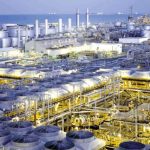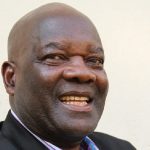What are miners doing?
Mining companies need working rail to move products to export markets efficiently. But they now have to incur an extra cost; companies are putting in money to fix NRZ’s broken-down trains so that they are usable.
Among the deals that NRZ is discussing with mining companies:
- Zimasco, one of the country’s biggest ferrochrome producers, plans to spend US$2.46 million to refurbish 100 wagons and six NRZ locomotives. In exchange, these trains will be dedicated to Zimasco traffic, although they can be used by other customers when Zimasco doesn’t need them.
- Gas importer ZimGas will put up US$390, 000 to refurbish 26 gas tanks to move gas.
- African Rail Company is to refurbish 100 tanks to move fuel from Maputo
- Rabb Africa, a company that maintains and leases trains, has been contracted by lithium producers in Zimbabwe to ship lithium concentrate exports. The company and NRZ are discussing a draft agreement on wagons and locomotives.
- Samplestone Mining will refurbish 6 locomotives and 600 wagons so that it can move coke and coking coal to Maputo.
- Great Lakes Lion is to spend US$14.8 million on wagon refurbishment so that it can move coal to Maputo “Client has indicated that they want to refurbish wagons in batches of 80 wagons,” NRZ says.
- Silvergill Mineral Hub, which will consolidate chrome from small players for export, is also working on a deal for wagons. Another company, Makuwe Engineering, plans to spend US$2 million to fix nine locomotives and 100 wagons for iron ore exports to Maputo
The absence of efficient rail is an obstacle that Tsingshan, which is building a 1-million-tonne-per-year steel plant at Manhize, near Mvuma, will have to overcome. In the MoU signed with the government for the project is a plan to rehabilitate some 1,000 km of rail. For the Manhize project to run efficiently, it would need to fix the rail line from Hwange – the source of the coal it will use – to the Mvuma site and, eventually, a dedicated line onward to Beira.
Last year, Contango, a UK company that is developing a new coal mine in Lubu, Hwange, said there was growing demand for coal abroad, but it had to find ways of getting around the rail problem.
Says Contango: “The Company expects that thermal coal could generate margins of over US$100 per tonne. This could be further improved in the event the company is successful in its current efforts to secure a rail transport solution rather than trucking to port.”- NewZWire
(64 VIEWS)


